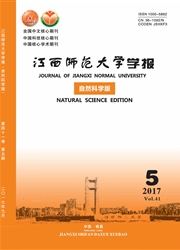

 中文摘要:
中文摘要:
通过对鄱阳湖表层沉积物5种重金属(Cd、Pb、Ca、Zn和Cr)含量特征进行分析,并应用潜在生态危害指数法对重金属的潜在生态风险进行评价.结果表明:Cu、Pb、Zn、Cd、Cr含量范围和均值分别为20.33-160.67、61.53;24-87.61、48.17;64.83-409.28、194.11:0.33-4.39、1.54和11.06-67.83、28.05mg/kg;沉积物中重金属的污染程度较高,Cu是主要的污染因子.潜在生态风险评价显示:该湖表层沉积物中重金属潜在生态风险指数彤的平均值为151.81,属中等生态危害,5种重金属潜在生物毒性风险大小依次为Cu〉Cd〉Pb〉Zn〉Cr.
 英文摘要:
英文摘要:
Surface sediments samples were collected for testing the concentration of Cd. Pb. Cu. Zn and Cr. The method of potential ecological risk index was applied to assess the heavy mentals pollution in the surface sediments of Poyang Lake. The results indicated that the concentration of Cu ranged from 20.33 to 160.67 mg/kg (mean: 61.53 mg/kg); Pb ranged from 24 to 87.61 mg/kg (mean: 48.17 mg/kg); Zn range from 64.83 to 409.28 mg/kg (mean: 194.11 mg/kg); Cd ranged from 0.33 to 4.39 mg/kg (mean: 1.54 mg/kg); Cr ranged from 11.06 to 67.83 mg/kg (mean: 28.05 mg/kg). The pollution of heavy metals in the sediments of Poyang Lake is in a high level where Cu is the main pollution element. The mean potential ecological risk index was 151.81 in the lake which classified as medium contamination. The sequence in the degree of potential ecological risks was Cu 〉 Cd 〉 Pb 〉 Zn 〉 Cr.
 同期刊论文项目
同期刊论文项目
 同项目期刊论文
同项目期刊论文
 期刊信息
期刊信息
